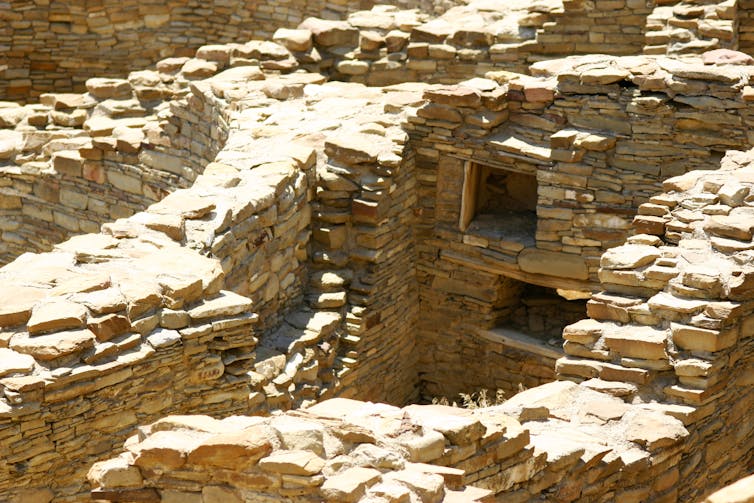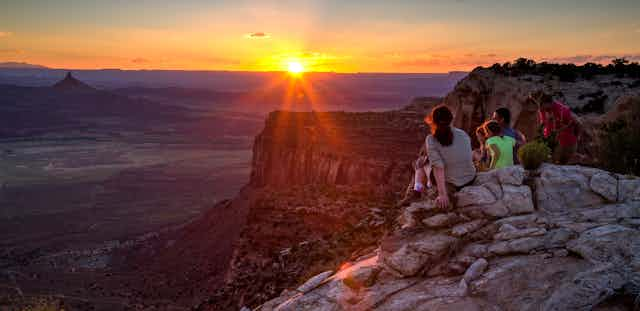On April 26 President Trump issued an executive order calling for a review of national monuments designated under the Antiquities Act. This law authorizes presidents to set aside federal lands in order to protect “historic landmarks, historic and prehistoric structures, and other objects of historic or scientific interest.”
Since the act became law in 1906, presidents of both parties have used it to preserve 157 historic sites, archaeological treasures and scenic landscapes, from the Grand Canyon to key landmarks of the civil rights movement in Birmingham, Alabama.
President Trump calls recent national monuments “a massive federal land grab,” and argues that control over some should be given to the states. In our view, this misrepresents the law. National monuments can be designated only on federal lands already owned or controlled by the United States.
The president’s order also suggests that he may consider trying to rescind or shrink monuments that were previously designated. Based on our analysis of the Antiquities Act and other laws, presidents do not have the authority to undo or downsize existing national monuments. This power rests with Congress, which has reversed national monument designations only 10 times in more than a century.
Contests over land use
Trump’s executive order responds to opposition from some members of Congress and local officials to national monuments created by Presidents Bill Clinton and Barack Obama. It calls for Interior Secretary Ryan Zinke to review certain national monuments created since 1996 and to recommend “Presidential actions, legislative proposals, or other actions,” presumably to shrink or eliminate these monuments. The order applies to monuments larger than 100,000 acres, as well as others to be identified by Secretary Zinke.
When a president creates a national monument, the area is “reserved” for the protection of sites and objects there, and may also be “withdrawn,” or exempted, from laws that would allow for mining, logging or oil and gas development. Frequently, monument designations grandfather in existing uses of the land, but prohibit new activities such as mineral leases or mining claims.
Zinke said that he will examine whether such restrictions have led to “loss of jobs, reduced wages and reduced public access” in communities around national monuments. Following Secretary Zinke’s review, the Trump administration may try either to rescind monument designations or modify them, either by reducing the size of the monument or authorizing more extractive activities within their boundaries.

Two of the most-contested monuments are in Utah. In 1996 President Clinton designated the Grand Staircase-Escalante National Monument, a region of incredible slot canyons and remote plateaus. Twenty years later, President Obama designated Bears Ears National Monument, an area of scenic rock formations and sites sacred to Native American tribes.
Utah’s governor and congressional delegation oppose these monuments, arguing that they are larger than necessary and that presidents should defer to the state about whether to use the Antiquities Act. Local officials have raised similar complaints about the Gold Butte National Monument in Nevada and the Katahdin Woods and Waters National Monument in Maine, both designated by Obama in late 2016.
What the law says
The key question at issue is whether the Antiquities Act gives presidents the power to alter or revoke decisions by past administrations. The U.S. Constitution gives Congress the power to decide what happens on “territory or other property belonging to the United States.” When Congress passed the Antiquities Act, it delegated a portion of that authority to the president so that administrations could act quickly to protect resources or sites that are threatened.
Critics of recent national monuments argue that if a president can create a national monument, the next one can undo it. However, the Antiquities Act speaks only of designating monuments. It says nothing about abolishing or shrinking them.
Two other land management statutes from the turn of the 20th century – the Pickett Act of 1910 and the Forest Service Organic Act of 1897 – gave the president authority to withdraw other types of land, and also specifically stated that the president could modify or revoke those actions. These laws clearly contrast with the Antiquities Act’s silence on reversing past decisions.

In 1938, when President Franklin D. Roosevelt considered abolishing the Castle-Pinkney National Monument – a deteriorating fort in Charleston, South Carolina – Attorney General Homer Cummings advised that the president did not have the power to take this step. (Congress abolished the monument in 1951.)
Congress enacted a major overhaul of public lands law in 1976, the Federal Land Policy and Management Act, repealing many earlier laws. However, it did not change the Antiquities Act. The House Committee that drafted the 1976 law also made clear in legislative reports that it intended to prohibit the president from modifying or abolishing a national monument, stating that the law would “specifically reserve to the Congress the authority to modify and revoke withdrawals for national monuments created under the Antiquities Act.”
The value of preservation
Many national monuments faced vociferous local opposition when they were declared, including Jackson Hole National Monument, which is now part of Grand Teton National Park. But over time Americans have come to appreciate them.
Indeed, Congress has converted many monuments into national parks, including Acadia, the Grand Canyon, Arches and Joshua Tree. These four parks alone attracted over 13 million visitors in 2016. The aesthetic, cultural, scientific, spiritual and economic value of preserving them has long exceeded whatever short-term benefit could have been derived without legal protection.
As Secretary Zinke begins his review of Bears Ears and other national monuments, he should heed that lesson, and also ensure that his recommendations do not overstep the president’s lawful authority.

